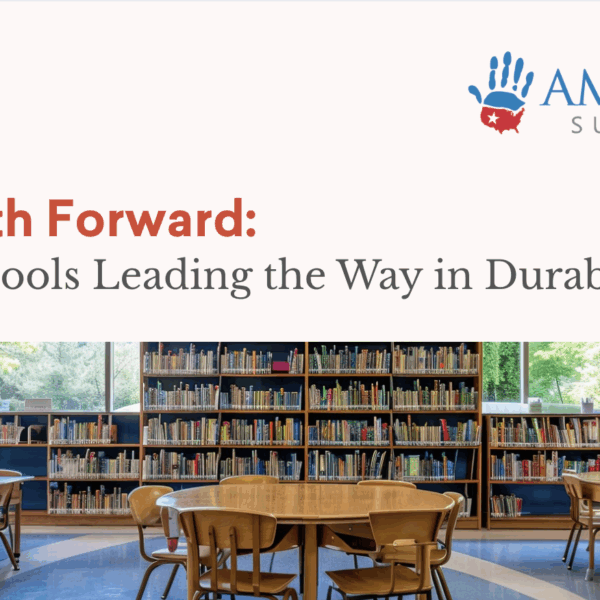
In a rapidly changing educational landscape, we find ourselves at the crossroads of tradition and innovation. The conventional expectations of a high school graduate, characterized by grades and standardized test scores, are no longer sufficient to prepare students for the complexities of the modern world. To ensure our students are well-prepared for both postsecondary education and the workforce, we must reimagine the graduate profile. The student-centered and competency-based learning models that are centered around graduate profiles emphasize student competencies, community involvement, employer partnerships, and holistic assessments, ultimately leading to better outcomes and more equitable representations of our graduates.
Beyond Grades: Embracing a Competency-Based Approach
While grades have long been the gold standard for evaluating academic performance, they fall short of capturing the full spectrum of a student’s abilities and potential. A paradigm shift towards a competency-based, real-world learning approach is essential. Rather than fixating on questions like, “What does a B in chemistry signify?” our focus should shift towards more meaningful inquiries such as, “Do students possess a profound understanding of chemistry and its real-world applications?” By evaluating practical skills, we equip students with the tools to thrive in authentic, everyday situations.
Moreover, it’s imperative that we move beyond the confines of traditional test scores and actively recognize equally valuable durable skills such as resilience, problem-solving, emotional intelligence, and others. These competencies serve as the cornerstone for successfully navigating the complex challenges woven into the fabric of our society today.
Paving the Way to Equity and Inclusion
The adoption of graduate profiles represents a significant stride toward fostering inclusive and equitable educational practices for all students. Educational models such as personalized and student-centered learning place a strong emphasis on aligning the educational journey with the competencies outlined in graduate profiles. These models not only prioritize skills widely recognized across the nation but also provide extensive student support, enabling a larger and more diverse group of students to participate in community or employer-engaged learning opportunities. By valuing a comprehensive spectrum of competencies beyond the traditional focus on school-based skills, these models open doors for a broader range of students to showcase the skills they have acquired throughout their K-12 education.
Tangible Steps for Educators and Employers
Educators and employers play pivotal roles in reshaping the graduate profile and preparing students for the challenges and opportunities of the 21st century. Here are some actionable strategies to foster a graduate profile that prepares and reflects the potential of today’s student body:
- Embrace Competency and Durable Skills: Incorporate a competency-based approach to assess a broad range of skills and knowledge essential for real-world success. Critical thinking, communication, collaboration, adaptability, and digital literacy are key competencies that students must develop to thrive in a rapidly changing job market. For example, Utah’s Personalized Competency-Based Learning Framework empowers students to take responsibility for their learning by giving them voice, choice, and customized support to achieve success in essential knowledge and skills.
- Encourage Community Involvement: To bring the graduate profile to life, it’s crucial to involve the surrounding community in its development. States and districts should ensure that there is broad stakeholder involvement in the creation and continuous improvement of portraits of graduates. This collaboration can take place at both the state and local levels, where stakeholders participate in design meetings that inform the creation of a statewide or district-level portrait of a graduate, which ultimately, fosters trust and ensures that the competencies in these portraits reflect the needs and perspectives of the communities themselves. Take North Carolina’s Portrait of a Graduate Design Team, which consisted of regionally-grouped teams of more than 1,150 educators, students, families, administrators, elected officials, representatives from local businesses, non-profits, workforce development boards, and higher education, to develop its latest state-level Portrait of a Graduate.
- Develop Employer Partnerships: Bridging the gap between high school and the workforce also requires strong collaboration between educational institutions and employers. Creating programs – or intermediary organizations – that can coordinate internships, co-op opportunities, and work-based learning experiences is essential. For instance, Iowa’s WorkSmart Connector establishes strong collaboration and partnerships between educational institutions (including K-12 and community colleges) and regional employers to offer real-world learning experiences and career exploration for students. This real-world exposure enhances students’ skill sets and provides a clearer pathway to career success while benefiting employers by accessing a talent pool with relevant skills and a strong work ethic.
- Invest in Teacher Professional Development: Empower educators with professional development programs that equip them with the knowledge and skills to teach durable skills effectively. These programs should focus on curriculum integration, assessment strategies, pedagogical approaches, interdisciplinary collaboration, and feedback mechanisms to enhance teacher preparedness and shift educator mindsets toward a new approach, like South Carolina’s PersonalizeSC.
- Shift to Holistic Assessments: Bringing a profile of a graduate to life requires the implementation of personalized or student-centered and competency/proficiency-based learning models that allow for a variety of assessment methods, such as portfolios, exhibitions, presentations, and capstone projects, to satisfy graduation requirements. There is no one ‘right way’ to capture this type of learning, so allowing for a suite of diverse assessment methods, such as Vermont’s Multi-Tiered System of Support Guidelines, is key to unlocking personalized learning and targeted support through this work.
The Future We Can Create
By embracing a competency-based approach, fostering community involvement, nurturing employer partnerships, and prioritizing holistic assessments, we lay the foundation for graduates who are well-rounded, socially responsible, and ready to excel in an ever-changing world.
The future we envision is one where equitable education pathways serve as protective shields that safeguard both individuals and societies from the widespread impact of inequity. As adults, we have the opportunity and responsibility to invest in an educational system that paves the way for a brighter future for us all. As the America Succeed report “Advancing Equity in Education” emphasizes, this investment benefits not only individuals but also our economy, society, and future generations.
Together, let’s redefine the graduate profile and empower our students to thrive in a new era.
Stay tuned for the second installment of this article, where we will dive deeper into the pivotal role of state policies in fostering equitable education and shaping the future of hiring; after all, these two facets are inherently intertwined and inseparable.




